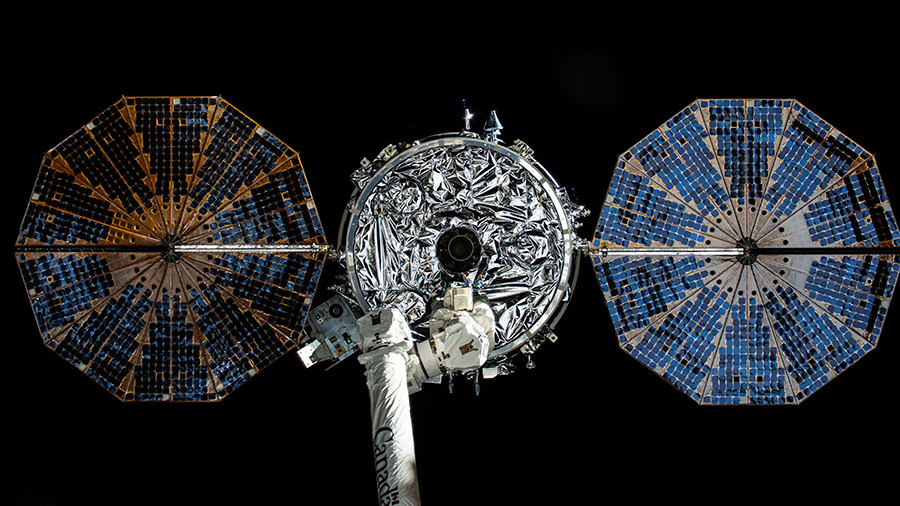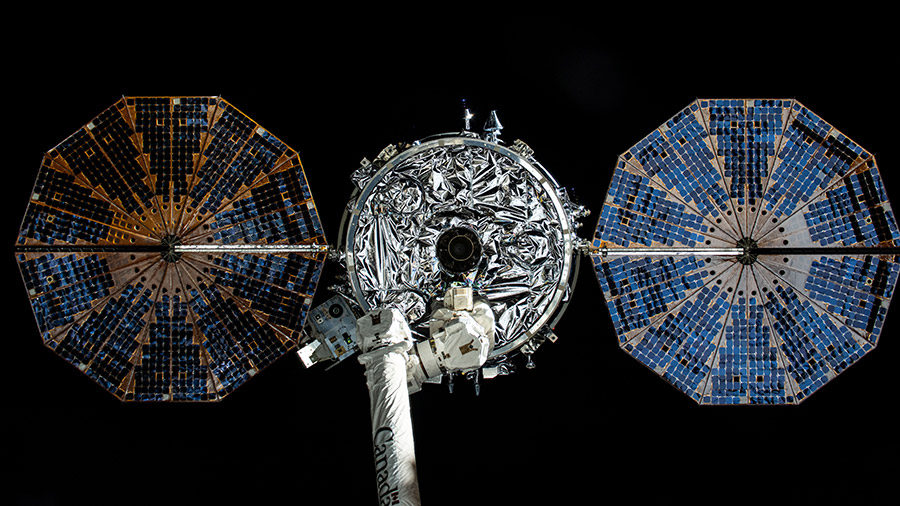
Space agriculture and human research operations were the prime science activities aboard the International Space Station on Tuesday. The four NASA astronauts and three Roscosmos cosmonauts representing Expedition 71 and the two NASA Boeing Crew Flight Test astronauts also participated in a variety of cargo activities and lab maintenance aboard the orbiting lab.
NASA astronauts Butch Wilmore and Suni Williams spent the majority of their day testing ways to water plants growing without soil in the weightless environment of microgravity. Williams first set up the Plant Water Management hardware in the Harmony module then tested a variety of liquid flow methods while video recording the results. Following her work, Wilmore ran more tests using hydroponics and air circulation techniques to learn how to effectively nourish a variety of plants on spacecraft and space habitats.
Cosmonaut Nikolai Chub attached sensors to his chest that recorded his heart activity while he relaxed Tuesday morning. NASA Flight Engineer Matthew Dominick performed isometric mid-thigh pulls on the advanced resistive exercise device testing his strength and force production in microgravity. Doctors use the insights from the numerous space biology studies aboard the station to keep crews healthy on long-term missions.
NASA Flight Engineer Jeanette Epps began and ended her day relocating NASA and Roscosmos hardware aboard the orbital outpost. In the middle of her shift, Epps replaced hardware in the station’s bathroom located in the Tranquility module then transferred radiation data, including electrons, protons, neutrons, and gamma-rays, collected from optical fibers to a computer.
NASA Flight Engineers Tracy C. Dyson and Mike Barratt spent most of the day inside SpaceX Dragon Endeavour configuring the spacecraft for cargo packing operations. Dominick, commander of Endeavour, pitched in to help update software, synchronize data, and charge batteries on the spacecraft’s computer tablets.
Commander Oleg Kononenko kicked off his day inside the Nauka science module continuing to explore the capabilities of a 3D printer in microgravity. He later worked on cargo transfers inside the Soyuz MS-25 crew ship docked to the Prichal docking module. Flight Engineer Alexander Grebenkin worked on household duties throughout Tuesday including orbital plumbing, reviewing inspection tasks, and cleaning smoke detectors, before ending his shift photographing Earth landmarks.
At the end of the day, all nine space station residents gathered together and practiced an emergency drill in response to unlikely scenarios such as a fire, a pressure leak, or a chemical release. The crew reviewed individual responsibilities, practiced evacuation techniques, and coordinated communications with mission controllers on the ground.
Beginning Monday, July 29th, the IMC Daily Summary will be discontinued.
To learn more about the groundbreaking science and engineering happening daily on the International Space Station, please visit the space station blog at https://blogs.nasa.gov/spacestation/, or browse a variety of space station research resources at https://nasa.gov/iss-science.
Learn more about station activities by following the space station blog, @space_station and @ISS_Research on X, as well as the ISS Facebook and ISS Instagram accounts.
Get weekly video highlights at: https://roundupreads.jsc.nasa.gov/videoupdate/
Get the latest from NASA delivered every week. Subscribe here: www.nasa.gov/subscribe

